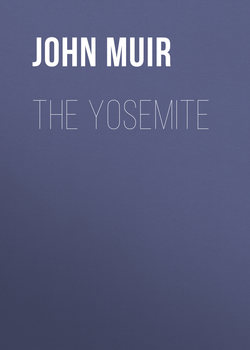Читать книгу The Yosemite - John Muir - Страница 13
Chapter 1
The Approach to the Valley
The Grandeur Of The Yosemite Fall
ОглавлениеDuring the time of the spring floods the best near view of the fall is obtained from Fern Ledge on the east side above the blinding spray at a height of about 400 feet above the base of the fall. A climb of about 1400 feet from the Valley has to be made, and there is no trail, but to any one fond of climbing this will make the ascent all the more delightful. A narrow part of the ledge extends to the side of the fall and back of it, enabling us to approach it as closely as we wish. When the afternoon sunshine is streaming through the throng of comets, ever wasting, ever renewed, fineness, firmness and variety of their forms are beautifully revealed. At the top of the fall they seem to burst forth in irregular spurts from some grand, throbbing mountain heart. Now and then one mighty throb sends forth a mass of solid water into the free air far beyond the others which rushes alone to the bottom of the fall with long streaming tail, like combed silk, while the others, descending in clusters, gradually mingle and lose their identity. But they all rush past us with amazing velocity and display of power though apparently drowsy and deliberate in their movements when observed from a distance of a mile or two. The heads of these comet-like masses are composed of nearly solid water, and are dense white in color like pressed snow, from the friction they suffer in rushing through the air, the portion worn off forming the tail between the white lustrous threads and films of which faint, grayish pencilings appear, while the outer, finer sprays of water-dust, whirling in sunny eddies, are pearly gray throughout. At the bottom of the fall there is but little distinction of form visible. It is mostly a hissing, clashing, seething, upwhirling mass of scud and spray, through which the light sifts in gray and purple tones while at times when the sun strikes at the required angle, the whole wild and apparently lawless, stormy, striving mass is changed to brilliant rainbow hues, manifesting finest harmony. The middle portion of the fall is the most openly beautiful; lower, the various forms into which the waters are wrought are more closely and voluminously veiled, while higher, towards the head, the current is comparatively simple and undivided. But even at the bottom, in the boiling clouds of spray, there is no confusion, while the rainbow light makes all divine, adding glorious beauty and peace to glorious power. This noble fall has far the richest, as well as the most powerful, voice of all the falls of the Valley, its tones varying from the sharp hiss and rustle of the wind in the glossy leaves of the live-oak and the soft, sifting, hushing tones of the pines, to the loudest rush and roar of storm winds and thunder among the crags of the summit peaks. The low bass, booming, reverberating tones, heard under favorable circumstances five or six miles away are formed by the dashing and exploding of heavy masses mixed with air upon two projecting ledges on the face of the cliff, the one on which we are standing and another about 200 feet above it. The torrent of massive comets is continuous at time of high water, while the explosive, booming notes are wildly intermittent, because, unless influenced by the wind, most of the heavier masses shoot out from the face of the precipice, and pass the ledges upon which at other times they are exploded. Occasionally the whole fall is swayed away from the front of the cliff, then suddenly dashed flat against it, or vibrated from side to side like a pendulum, giving rise to endless variety of forms and sounds.
